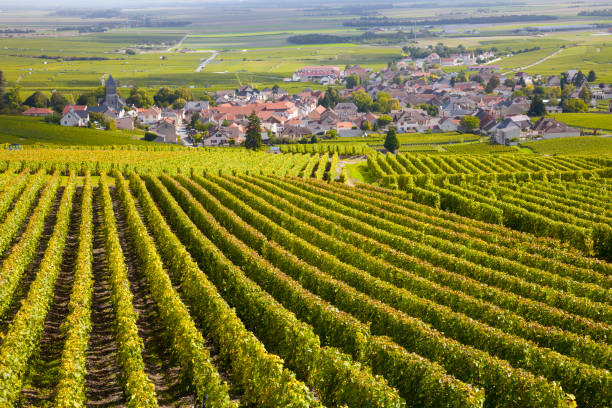Introduction

Traditional Economy – African nations today face immense challenges in terms of industrialization, exacerbated by the prevailing traditional economic systems that dominate many regions. As global economic dynamics continue to evolve, it is crucial to examine whether traditional economies can serve as a catalyst for African countries to successfully industrialize. This essay explores the potential of traditional economies in fostering industrialization, taking into account the various factors, challenges, and prospects associated with this process.
Brief overview of traditional economies in Africa
Traditional economies in Africa are characterized by subsistence agriculture, bartering, communalism, and reliance on natural resources. These economies often lack significant market integration, modern infrastructure, and advanced agricultural techniques, creating limitations to economic growth and diversification.
Understanding industrialization as a development goal
Industrialization has long been considered a central pathway to economic growth, poverty reduction, and increased standards of living. A successful industrialization process entails the transition from an agrarian and extraction-based economy to one that promotes manufacturing, technological advancements, and job creation.
Traditional economies and their potential for industrialization
While traditional economies possess inherent limitations, they also have certain strengths that could facilitate industrialization processes. Indigenous knowledge, local resources, and cultural practices can be harnessed as assets to foster sustainable and inclusive industrial development.
Challenges faced by African countries in industrializing
Numerous challenges hinder African nations from achieving industrialization. Insufficient infrastructure, limited access to capital, weak institutions, and a lack of skilled labor are all obstacles that impede progress and perpetuate dependence on traditional economies.
Role of government policies in enabling industrialization
Government policies play a crucial role in facilitating industrialization. Effective policies promoting investment, innovation, and technology transfer can support the transformation of traditional economies into modern industrial powerhouses.
Importance of regional integration for industrialization
Regional integration among African countries offers significant opportunities for industrialization. By pooling resources, harmonizing policies, and fostering cross-border trade, regional blocs can create a larger market and boost industrial productivity.
Impact of globalization on traditional economies in Africa
Globalization has both positive and negative implications for Africa’s traditional economies. While globalization offers chances for resource extraction and export-led industrialization, it can also jeopardize local industries and exacerbate dependency on foreign imports.
Role of sustainable development in industrialization efforts
A sustainable development approach to industrialization in African countries is crucial. By incorporating environmental conservation, social inclusion, and economic growth, countries can ensure that industrialization efforts are both beneficial and sustainable in the long run.
Lessons from successful cases of industrialization in the region
Examining successful cases of industrialization in Africa, such as South Africa and Mauritius, provides valuable lessons on how traditional economies can be effectively transformed through targeted policies, investment in human capital, and pro-active government intervention.

How Did America Industrialize?
Traditional Economy – The industrialization of America was a significant turning point in its history, marking the transition from an agrarian society to an industrial powerhouse. This transformation was made possible through a combination of various factors, including technological advancements, abundant natural resources, a favorable business climate, and demographic changes.
One of the key catalysts for American industrialization was the development of new technologies. Inventions such as the steam engine, the cotton gin, and the telegraph revolutionized industry and communication. The steam engine, for instance, allowed factories to run machinery more efficiently, leading to increased productivity. Eli Whitney’s cotton gin drastically improved cotton production, leading to the rise of the textile industry. The telegraph enabled faster communication and coordination among businesses, facilitating the growth of industries like the railroads.
Abundant natural resources also played a crucial role in America’s industrialization. The country boasted vast reserves of coal, iron, and oil, all essential for powering industries. These resources were easily accessible, and the government’s policy of providing land grants to private enterprises encouraged their exploitation. For example, the discovery of gold and silver in California during the mid-1800s led to a flurry of mining activity and economic growth in the region.
America’s business-friendly climate also contributed to its industrialization. The government adopted a laissez-faire approach, allowing businesses to operate with minimal interference. This environment allowed entrepreneurs to take risks and innovate, attracting investment capital from around the world. It also promoted competition, incentivizing companies to strive for efficiency and lower costs.
Furthermore, demographic changes fueled industrialization. The population of America grew rapidly during the 19th century due to immigration from Europe and a high birth rate. This expanding labor pool provided businesses with a large workforce, ensuring the availability of cheap labor and further driving industrialization. Immigrants often settled in urban areas, providing the necessary labor for factories and other industrial enterprises.
The development of transportation infrastructure was also vital for America’s industrialization. The construction of canals, such as the Erie Canal, linked markets and made the transport of goods faster and cheaper. The railroads were a game-changer, allowing for the rapid movement of raw materials and finished products across long distances. These transportation networks facilitated the growth of industries and opened new markets, supporting the expansion of American industrialization.
The rise of American industrialization was also closely tied to economic factors such as financing and investment. The country boasted a robust banking system that provided capital for businesses to expand and modernize. The availability of credit encouraged entrepreneurship and supported the growth of industries. Additionally, the development of corporations as a legal entity allowed businesses to capitalize on economies of scale and raise significant amounts of capital through the sale of stocks and bonds.
Mass production techniques, pioneered by industrialists like Henry Ford, also contributed to America’s industrialization. Assembly lines and specialized machinery enabled the production of goods on a large scale, reducing costs and making products more affordable for consumers. This increased production and consumption further fueled industrialization.
Government policies also played a role in America’s industrialization. Tariffs on imported goods protected domestic industries from foreign competition, encouraging the growth of American manufacturing. The government also provided subsidies and land grants for infrastructure projects such as railroads, promoting economic development and industry.
America’s industrialization was the result of a combination of factors, including technological advancements, abundant natural resources, a favorable business climate, demographic changes, transportation infrastructure, financing and investment, mass production techniques, government policies, and protectionism. This transformative process propelled America to become a dominant industrial nation, shaping its economy and society for centuries to come.

How Did European Countries Industrialize?
Traditional Economy – Industrialization refers to the process by which societies transition from agrarian economies to industrial ones, characterized by the emergence of factories, mechanized production, and technological advancement. European countries played a crucial role in this transformative period, which began in the late 18th century and continued throughout the 19th century. Several factors contributed to the industrialization of these countries, including the availability of natural resources, advances in technology, colonial expansion, population growth, transportation infrastructure, political stability, and the rise of capitalism.
One of the primary factors that enabled European countries to industrialize was the abundance of natural resources. For instance, Great Britain benefited greatly from its vast coal and iron reserves, which were crucial for fueling the steam engine and constructing factories. Similarly, countries like Belgium, Germany, and France had access to significant mineral deposits that facilitated industrial growth.
Advancements in technology were also pivotal in the industrialization process. Innovations such as the steam engine, developed by James Watt in Great Britain, revolutionized transportation, agriculture, and manufacturing. Efficient machinery and new production techniques, such as the spinning jenny and power loom, led to increased productivity and the mechanization of many industries.
Colonial expansion played a significant role in providing European countries with access to new markets and resources. The acquisition of colonies in Africa, Asia, and the Americas enabled the exploitation of raw materials, such as cotton, rubber, and spices, which were essential for manufacturing. Additionally, European powers used the colonies as markets for their finished products, further fueling industrial growth.
Population growth and urbanization also contributed to industrialization. Traditional Economy – in the past European Countries went through traditional economy but they no longer use it today. The European population experienced a significant increase during the 18th and 19th centuries, leading to a surplus of labor. These migrants from rural areas provided the workforce necessary to staff the expanding factories and mines. Urbanization accelerated as new industries emerged, creating concentrated populations that stimulated economic activity and served as a market for manufactured goods.
Transportation infrastructure played a vital role in connecting industrial centers and facilitating the movement of goods and resources. The development of canals, such as the Manchester Ship Canal in England and the Suez Canal in Egypt, allowed for cheaper and faster transportation of raw materials and finished products over long distances. Furthermore, the construction of railways and steamships revolutionized global trade by reducing transportation time and costs.
Political stability was crucial for industrialization to take place. Countries that experienced relative peace and stability were better equipped to attract investment, foster innovation, and create an environment conducive to economic growth. Stable governments were also able to pass legislation and implement policies that protected property rights, encouraged entrepreneurship, and promoted industrial expansion.
Perhaps one of the most significant factors in European industrialization was the rise of capitalism. The emergence of a capitalist economic system, characterized by private ownership of the means of production and profit-driven enterprise, provided the conditions necessary for industrial growth. Capitalist economies rewarded innovation, risk-taking, and entrepreneurship, incentivizing individuals and businesses to invest in new technologies and industries.
The industrialization of European countries had profound social and economic impacts. It brought immense wealth and economic growth, transforming Europe into an economic powerhouse. However, this period also led to significant social disparities, with workers enduring difficult conditions and exploitation in factories and mines. Eventually, the social and economic inequalities sparked social movements advocating for labor rights, workers’ protection, and improved living standards.
Several factors contributed to the industrialization of European countries. The availability of natural resources, technological advances, colonial expansion, population growth, transportation infrastructure, political stability, and the rise of capitalism all played key roles. These interconnected factors fostered an environment conducive to industrial growth, leading to the emergence of factories, mechanized production, and significant technological advancements that shaped the modern world. However, the consequences of this transformative period highlight the importance of addressing social and economic inequalities for sustainable development.
Concluding thoughts on Traditional Economy
While traditional economies in Africa face numerous challenges in achieving industrialization, they possess untapped potential that can be harnessed through effective policies, investments, and regional integration. By leveraging indigenous knowledge, natural resources, and local practices, African countries can establish sustainable and inclusive industrial ecosystems that support economic growth and development.


1 thought on “Can Traditional Economy Enable African Countries To Industrialize?”